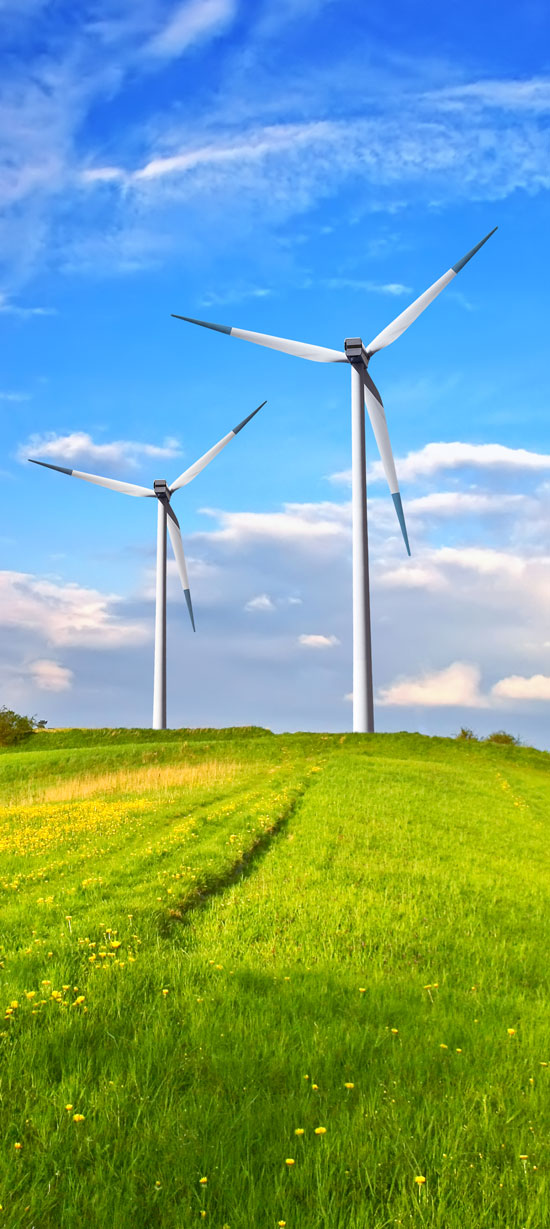Accidental discovery: Coating seems to improve reliability of wind power
DESPITE THE RIGORS of scientific inquiry and the methodical approaches of the world's most talented researchers, sometimes science has a surprise in store.
Such was the case when a group of researchers from the U.S. Department of Energy's (DOE) Argonne National Laboratory and The University of Akron discovered that a particular form of carbon coating not necessarily designed for wind turbines may indeed prove a boon to the wind industry -- a serendipitous finding that was recently highlighted in the journal Tribology International. Tribology is the study of science and engineering of interacting surfaces in relative motion and includes the study and application of the principles of friction, lubrication and wear.
Due to the strenuous environment inherent in wind turbine drivetrains, key components such as actuators, bearings and gears are prone to failure, meaning turbines require regular maintenance that helps drive up the price of wind energy. Prolonging the life of these components could greatly reduce the cost of wind power, the fastest growing source of energy in the world, thereby making it an even more attractive energy source.
These failures are often due to a phenomenon known as micropitting in which the repeated rolling and sliding cycles in the gears and bearings of turbines lead to cracks on the surface of drivetrain components. Further contact only exacerbates the cracking once it begins, chipping away at the metal and increasing the severity of the existing cracks until costly maintenance is necessary or, even worse, the drivetrain fails.
Diamonds in the drivetrain
Enter Dr. Gary Doll, director of UA’s Timken Engineered Surfaces Laboratories in the College of Engineering, a lab funded by the DOE and Argonne National Laboratory (ANL). Doll’s lab collaborates with Argonne's Tribology and Thermal-Mechanics Section to investigate how lubricants and materials interact, and from those findings then develop novel lubrication and coating concepts that reduce friction, and therefore micropitting, prolonging component life across a range of energy technologies.
Sometimes they get a little lucky. Such was the case when the researchers applied a new "diamond-like" coating (some of the carbon-to-carbon bonding in the coating is similar to that of diamonds), named N3FC, to wind turbine components, which was not the intended use. The team felt that if it was working under other sliding conditions, it might work in wind turbine drivetrains, as well.
So far, N3FC has proven its worth through more than 100 million testing cycles with no appreciable micropitting. If the coating performs similarly under real-world conditions, it could mean huge savings in terms of maintenance and prevention of failure in wind turbines nationwide -- to the tune of millions of dollars.
Joining Doll on this initiative was Harpal Singh, a mechanical engineering graduate student who had won student awards at the 2014 and 2015 Society for Tribologists and Lubrication Engineers Annual Meetings.
“Those awards brought Singh to the attention of colleagues at ANL, and he was offered a summer internship to perform some of his Ph.D. dissertation research,” explains Doll. “While performing his research at ANL, he was also tasked with performing similar tests on N3FC.”
Harpal performed all the measurements and applied the N3FC coating to the test articles. The construction of the functional hypothesis behind why the N3FC was effective at inhibiting micropitting was a group effort that all the researchers contributed to.
Continuing involvement
ANL and the Timken Engineered Surfaces Laboratories continue to collaborate in the area of wind turbine tribology.
“Harpal receive his Ph.D. in December 2015, and participated in UA’s commencement last Sunday,” Doll says. “He accepted a scientist position with a company called Sentient Science in Idaho Falls. A paper we co-authored last year won the ASME Best Paper Award in 2015, and another paper was just accepted.”
The DOE and ANL hosted a wind tribology workshop in February in Colorado, and Doll was one of the invited speakers. ANL will also be holding another workshop in Chicago this October in conjunction with the 2016 Tribology Frontiers Conference, and Doll has been asked to present some of their work there.
Story by Argonne National Laboratory and The University of Akron
Media contact: Lisa Craig, lmc91@uakron.edu, 330-972-7429

